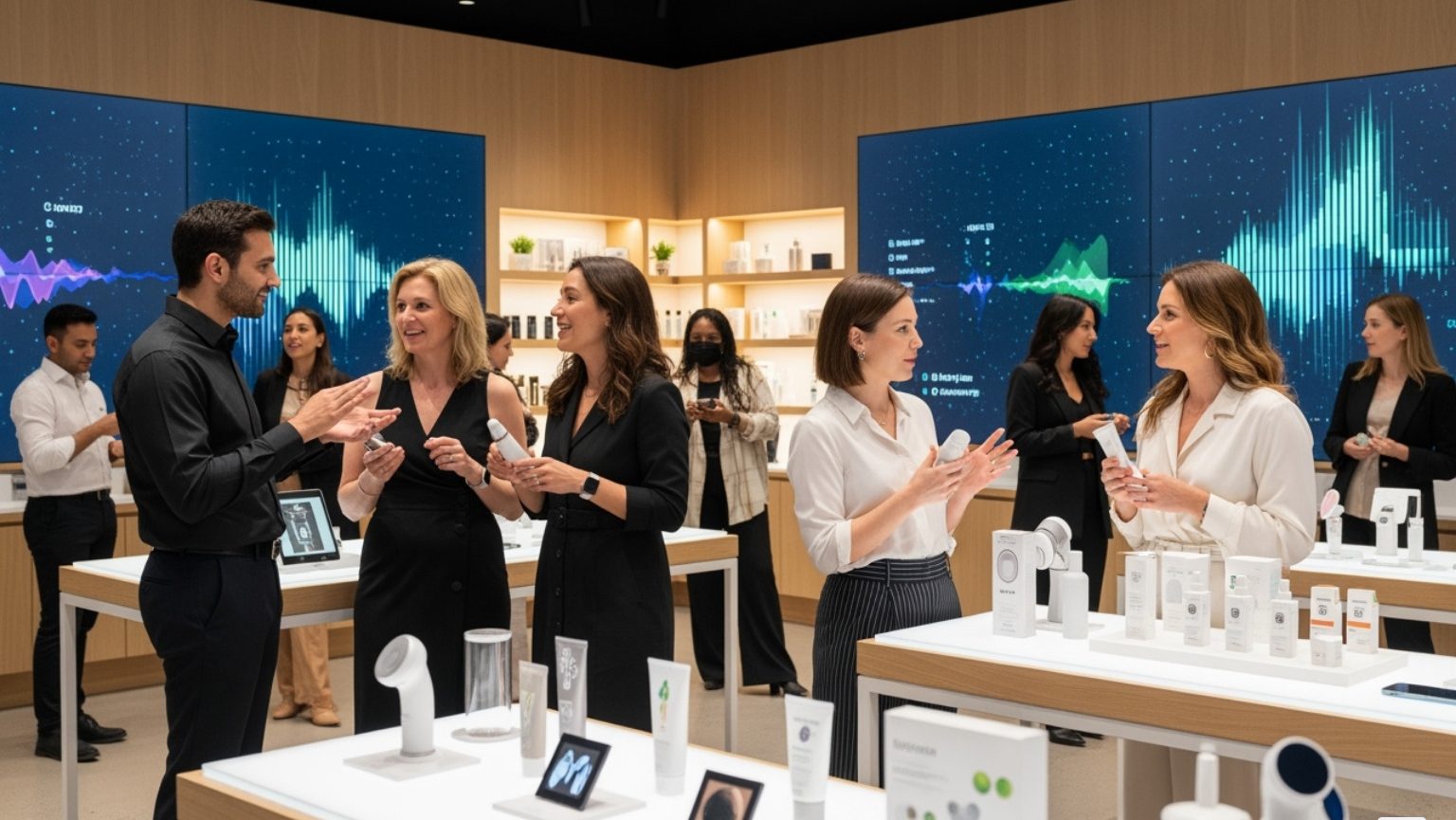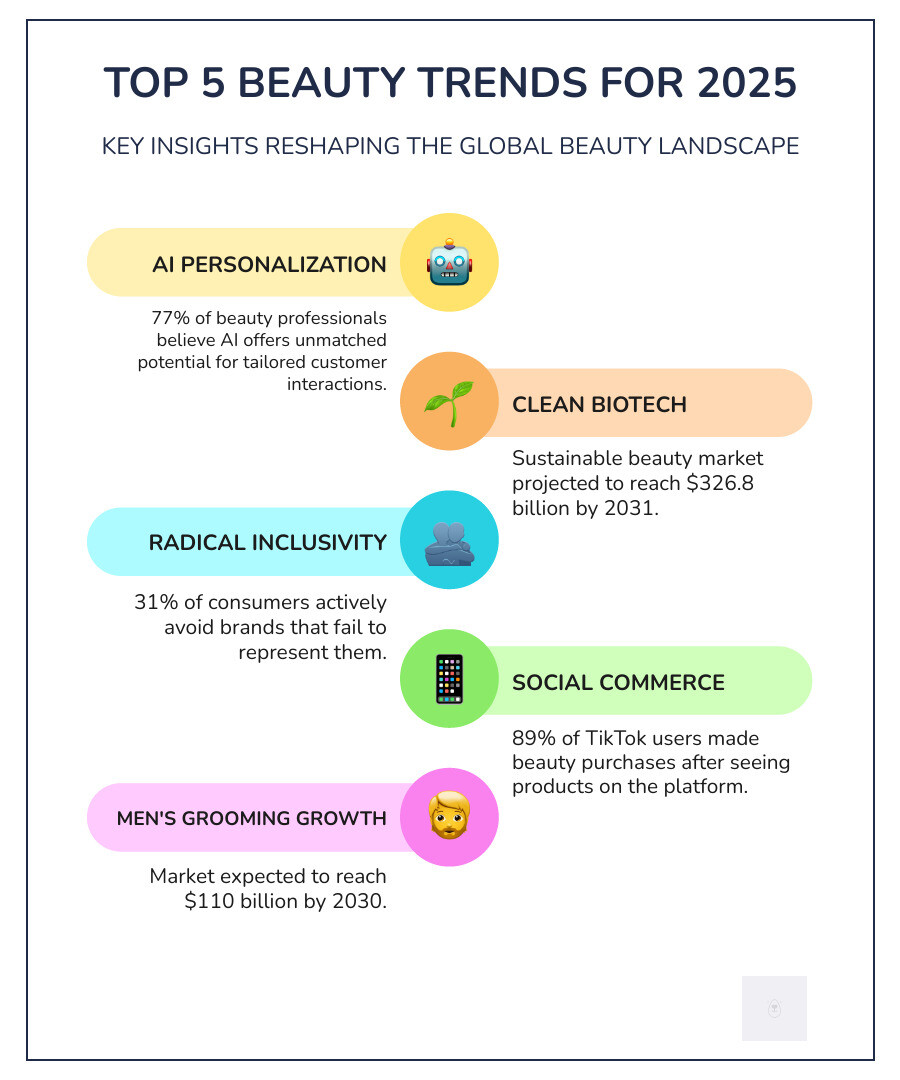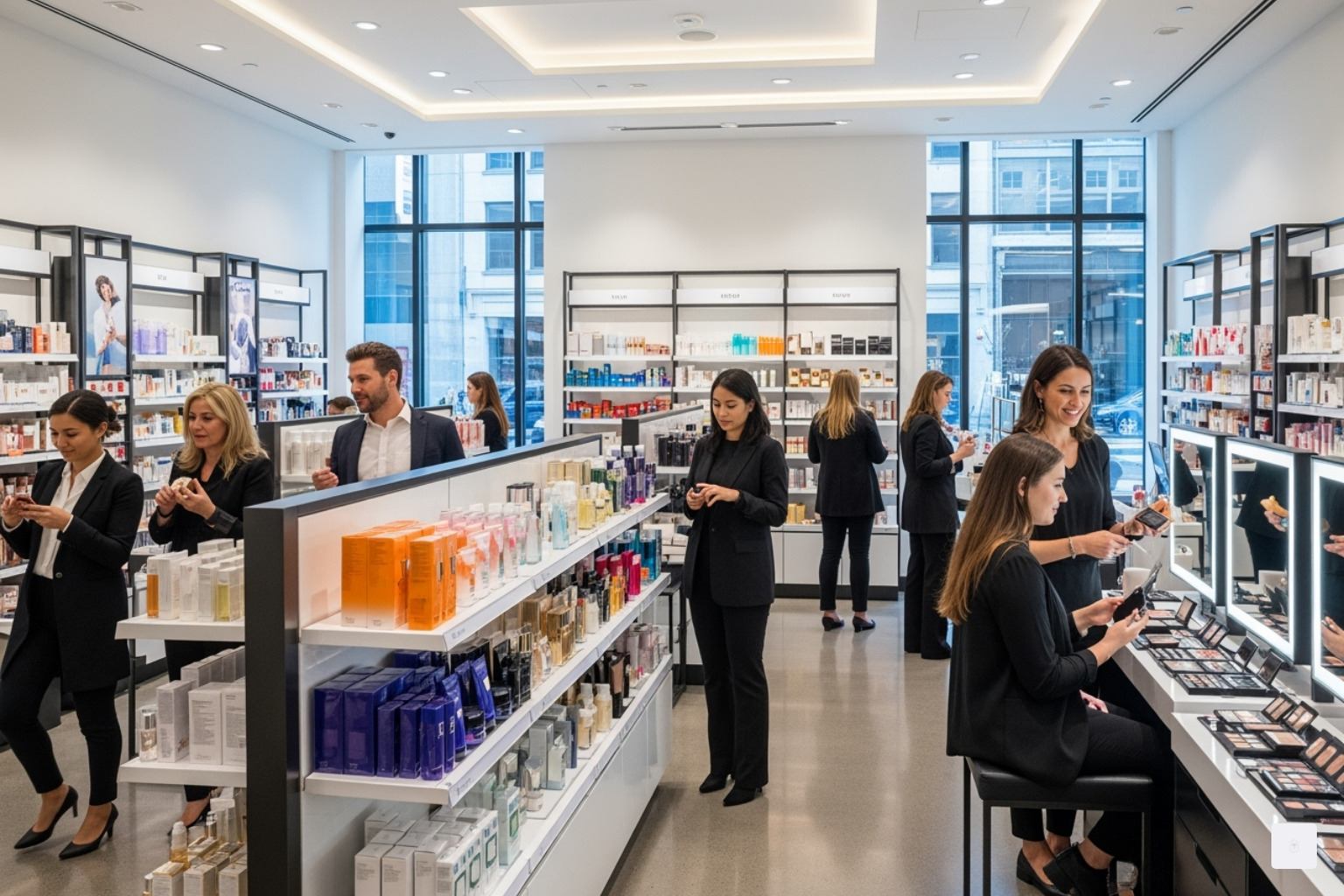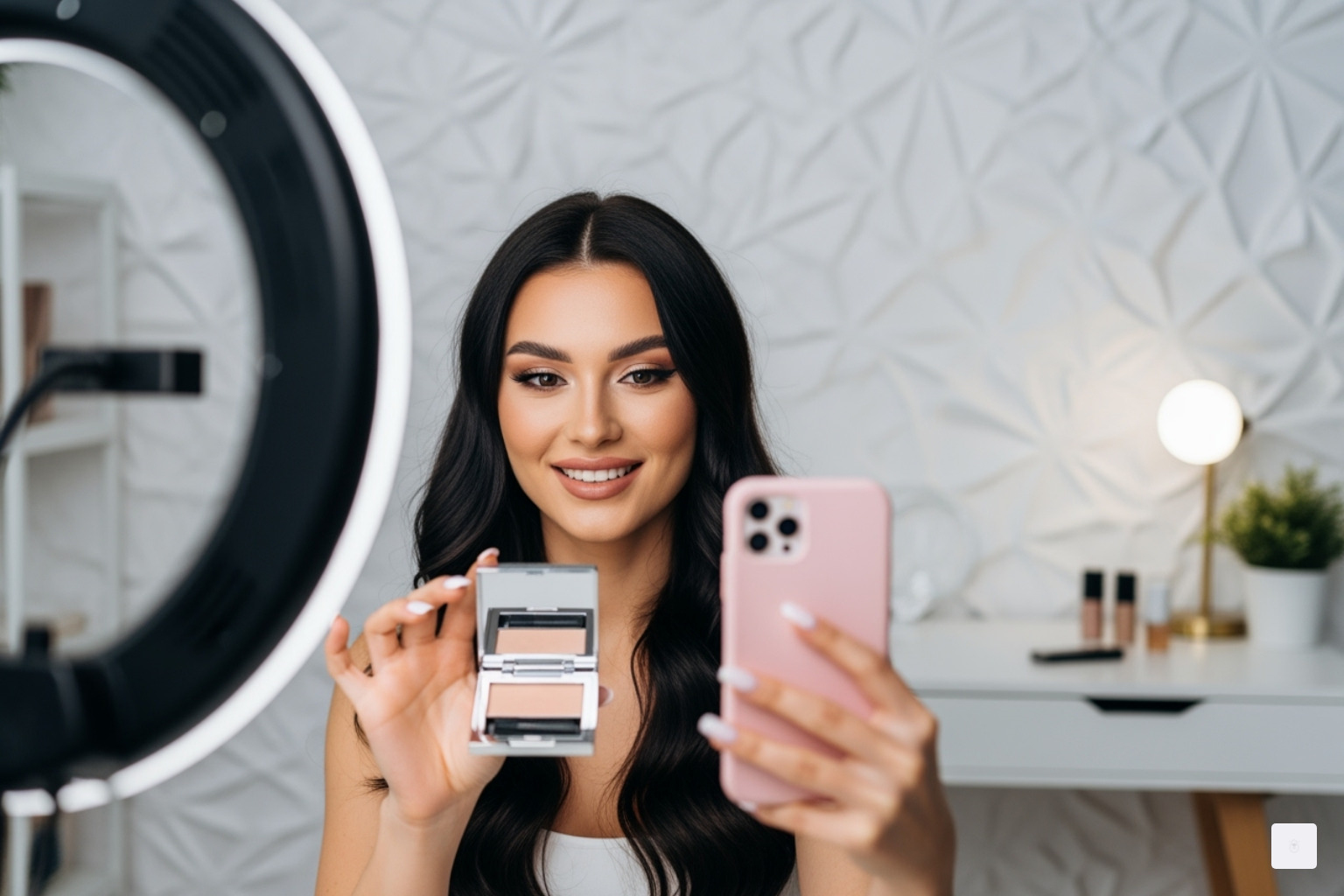
Why Beauty Industry Insights Are Reshaping Everything We Know About Glamour
Beauty industry insights reveal a sector in radical change. The global beauty market hit $446 billion in 2023 and is projected to reach $590 billion by 2028. This growth is fueled by a new generation of consumers who demand authenticity, sustainability, and personalization.
Top 5 Beauty Trends for 2025:
- AI Personalization: 77% of beauty professionals see AI as key for custom interactions.
- Clean Biotech: The sustainable beauty market is projected to hit $326.8 billion by 2031.
- Radical Inclusivity: 31% of consumers avoid brands that don’t represent them.
- Social Commerce: 89% of TikTok users have bought beauty products seen on the app.
- Men’s Grooming Growth: Expected to reach $110 billion by 2030.
From the boutiques of Manhattan to viral TikToks, success now hinges on understanding consumer values. Gone are the days of celebrity endorsements alone; today’s savvy shoppers in New York City scrutinize ingredients and demand ethical standards. They’ll splurge on premium products but also hunt for high-quality “dupes.”
As R. Couri Hay, my 40 years covering New York’s most exclusive events give me a unique perspective on how these beauty industry insights reflect broader cultural shifts. Beauty trends often mirror the values of the society elite I regularly cover.

The Global Beauty Market: A Snapshot of Growth and Projections
The global beauty industry is thriving, reaching $446 billion in 2023 and projected to hit $590 billion by 2028, growing at a steady 6% annual rate. While much of 2023’s growth came from price increases rather than volume, this signals a consumer shift toward prioritizing quality and value.
Skincare remains the dominant category, commanding 44% of the market, but fragrance was the surprise star with 14% growth, suggesting a renewed appreciation for scent as personal expression. Consumer spending habits have also evolved. Shoppers engage in both “trade-down” and “trade-up” behaviors, seeking affordable alternatives for some items while splurging on premium products that promise real results. This is highlighted by the 32% of consumers who actively seek high-quality “dupes” and the 18% willing to splurge on premium beauty.
Regional Differences and Opportunities
The beauty market’s growth is a global story with unique regional patterns. Understanding these nuances is key for any brand with global ambitions.
- North America: Remains a powerhouse, with the U.S. market projected to reach $104.74 billion in 2025. Here in New York City, we see trends emerge that influence tastes worldwide.
- Europe: Emphasizes clean beauty, sustainability, and sophisticated, science-backed formulations.
- Asia-Pacific: Shows incredible momentum with 10% growth in 2023. India is a standout, with its low-income consumers being the only group surveyed who intended to spend more on beauty in 2024.
- Latin America and the Middle East: These are high-growth markets, with 17% and 18% growth respectively in 2023, driven by youthful demographics and a strong cultural emphasis on beauty.
The New Consumer Code: Values Reshaping the Beauty Landscape
Today’s consumers, especially in trend-setting hubs like New York City, are rewriting the rules of beauty. Beauty industry insights show that purchasing decisions are now guided by a new code of values, demanding ethical considerations, transparency, and authenticity from brands. It’s no longer enough to deliver a flawless finish; consumers want to know what’s in their products, where ingredients come from, and a brand’s impact on society. This shift toward value-driven consumption is fundamental to building brand loyalty.
Sustainability and Clean Ingredients
The clean beauty movement is a profound shift in consumer preference. Walk into any Sephora or indie beauty store in SoHo, and you’ll see products touting natural and clean formulations. A remarkable 63% of US consumers now seek natural ingredients, and 68% look for “clean” products. The hashtag #CleanBeauty has billions of views across social media, underscoring its appeal.
Sustainability is now a non-negotiable, with over 65% of consumers seeking eco-friendly brands and a majority willing to pay more for them. This is pushing brands toward sustainable packaging, refillable options, and carbon-neutral practices. Biotech innovations are also key, allowing labs to replicate natural ingredients with a reduced environmental footprint. The sustainable beauty market’s projected growth to $326.8 billion by 2031 proves this is a lasting movement.
The Critical Role of Diversity and Inclusivity
Inclusivity is no longer a niche, but a mainstream expectation. Nearly 1 in 5 consumers feel left out of beauty ads, and 31% actively avoid brands that fail to represent them. This demand extends to product development, especially for diverse shade ranges. While Black consumers represent over 11% of beauty spending, Black-owned brands account for only 2.5% of industry revenue, highlighting a significant market gap.
Brands that have acceptd true inclusivity have set a new industry standard, proving the market potential of genuine representation. The call for inclusivity also encompasses gender-neutral products, pro-aging narratives that celebrate beauty at every life stage, and accessibility for people with disabilities. Embracing diversity requires a holistic approach, from product development to corporate culture, to build enduring loyalty. For more information on how to build a brand that resonates with a diverse audience, consider exploring our branding services.
Showing the Future with Tech: Key Beauty Industry Insights
The beauty world is experiencing a major tech moment, and from my vantage point in New York City, it’s fascinating to witness. This is a complete overhaul powered by artificial intelligence, augmented reality, and biotechnology that’s reshaping how we find, try, and buy beauty products. Customers are virtually trying on lipstick shades and getting personalized skin analyses through their phones. This technology isn’t just flashy—it’s solving real problems by making beauty more accessible and personalized than ever. For brands looking to stay competitive, understanding these technological shifts is essential. If you’re looking to steer these strategic shifts effectively, consider exploring More info about our strategic planning services.

AI and AR: The Rise of Hyper-Personalization
Virtual try-on experiences have changed the game, allowing customers to test products from home, which significantly reduces returns. The real magic, however, is in AI skin analysis. With a simple selfie, advanced algorithms can identify everything from fine lines to hydration levels. Search volume for “AI skin analysis” has jumped 1,071% since 2020, showing a clear consumer appetite for this insight.
This data-driven approach is fueling an explosion in customized skincare, a market projected to reach $62.4 billion by 2034. Instead of one-size-fits-all solutions, consumers receive products formulated for their unique needs. Furthermore, 77% of beauty professionals believe conversational AI offers the best potential for creating custom interactions, acting as a 24/7 personal beauty consultant. For brands looking to create these kinds of innovative customer experiences, More info about our event management services can help bring cutting-edge engagement strategies to life.
Biotech’s Impact on Sustainable Innovation
Biotechnology is quietly revolutionizing beauty by creating better products in ways that help the planet. Scientists identify potent compounds in nature and then recreate them in labs, preserving natural resources. Innovations like Activated Silk, derived from silk protein, are replacing petroleum-based ingredients. Another example, Alguronic Acid, is a lab-grown algae derivative that can improve skin health and reduce wrinkles. The fermentation process is another game-changer, creating pure, potent compounds with minimal waste. Biotech delivers what consumers demand: sustainability without sacrificing effectiveness.
Digital Dominance: Social Commerce and Evolving Brand Strategies
The beauty world has transformed into a sophisticated digital marketplace. Beauty industry insights show that social media isn’t just influencing what we buy—it’s becoming where we buy it. Here in New York City, the energy that once drove people to Fifth Avenue stores now powers viral TikTok videos that sell out products in hours.
Social commerce is the new frontier, blurring the line between entertainment and shopping. User-generated content (UGC) and influencer marketing are now more trusted than traditional ads, as consumers crave authentic recommendations. For brands, this requires a seamless omnichannel strategy that meets customers wherever they are, from TikTok to a physical store.

How Social Platforms Drive Sales and Engagement
Social media platforms have become powerful sales engines. TikTok’s impact is especially remarkable; it has become a beauty findy powerhouse, with 89% of its users making a beauty purchase after seeing a product featured. The platform’s high engagement rate (7.52% for beauty content) creates authentic connections that feel more like a friend’s advice than a brand’s sales pitch.
Viral trends, from ASMR skincare routines to quick tutorials, create organic demand in ways traditional advertising cannot. Social commerce now represents 6.2% of beauty sales and is climbing rapidly, with the average social shopper expected to spend $800 annually by 2025. For brands looking to master these platforms, More info about our social media services can provide the needed strategic guidance.
The Expanding Men’s Grooming Market
One of the most exciting beauty industry insights is the explosive growth of men’s grooming. The market is projected to reach $110 billion by 2030, reflecting a cultural shift where appearance is seen as essential self-care. Social media has been crucial in normalizing men’s beauty routines, with search volume for “men skincare routine” surging by 857% over the past five years.
Attitudes have shifted dramatically: 56% of men report buying more skincare products today than five years ago. Furthermore, 15% of U.S. males aged 18-65 already use cosmetics, with another 17% willing to try them. Men are seeking results-driven products, creating a massive opportunity for brands that approach this market thoughtfully and authentically.
Strategic Imperatives for Thriving in the New York Beauty Scene and Beyond
In today’s crowded beauty industry, especially on the busy streets of Manhattan, brand differentiation is essential for survival. Market saturation and economic uncertainty mean brands must craft compelling value propositions for discerning shoppers who research ingredients and compare prices before buying.
This landscape demands strategic agility. Brands must pivot quickly to respond to viral trends and consumer concerns. A solid crisis management plan is crucial for navigating potential backlash or supply chain disruptions. For brands navigating these choppy waters, we offer More info about our crisis management PR services.
Actionable Beauty Industry Insights for Brand Success
Success today is about building community and fostering loyalty. Brands are selling an experience and a sense of belonging, not just a product.
- Create compelling omnichannel experiences: The customer journey may start on TikTok, move to your website for research, and end with an in-store purchase. Every touchpoint must be seamless and connected.
- Balance premium and value offerings: With 18% of consumers splurging on premium products and 32% seeking high-quality “dupes,” brands must cater to both ends of the market. This means offering tiered product lines that deliver quality and efficacy at different price points.
- Accept agility and speed to market: In a fast-moving landscape, brands need streamlined development and flexible manufacturing to capitalize on viral trends quickly without sacrificing quality.
Winning in a Competitive Landscape
Winning in a trendsetting hub like New York City requires adapting to local preferences. What resonates in Manhattan may differ from what appeals in Brooklyn. Successful brands tailor their messaging and retail experiences to specific communities.
The importance of physical retail remains, even as online sales grow. Brick-and-mortar stores are vital for findy and experience. Innovative retailers are creating destination experiences with in-store events and personalized consultations, turning their spaces into community hubs.
Finally, high-end publicity is crucial for breaking through the noise. Strategic media coverage in a city like New York can lift a brand from obscurity to must-have status. It’s about building brand equity and creating a compelling story. For brands ready to lift their profile, we invite you to explore More info about our publicity services.
Conclusion
The beauty industry is at a spectacular crossroads where tradition meets innovation. Beauty industry insights reveal a revolution driven by tech breakthroughs, shifting consumer values, and digital commerce. From the ingredient-conscious shoppers in Manhattan to the viral power of TikTok, one thing is clear: success now depends on a brand’s ability to be authentic, inclusive, and agile.
We’re looking at a $446 billion industry projected to reach $590 billion by 2028, with growth fueled by consumers who demand clean ingredients, diversity, and AI-powered personalization. The most successful brands of tomorrow will build communities and create experiences that resonate with their customers’ deepest values.
Understanding these fundamental shifts isn’t just an advantage—it’s essential for survival and growth. The industry’s future is about aligning with consumer ethics and a digital-first lifestyle.
For those seeking a deeper dive into the society and culture shaping these remarkable trends, R. Couri Hay Columns offers unparalleled commentary and insider stories from the heart of New York’s high society scene. Explore our services to lift your brand strategy.


